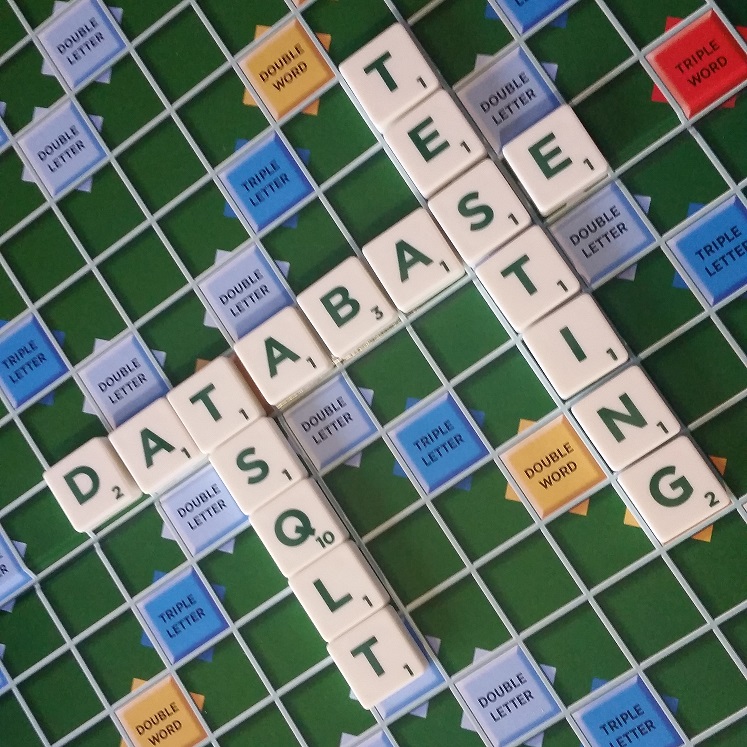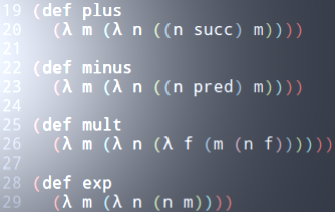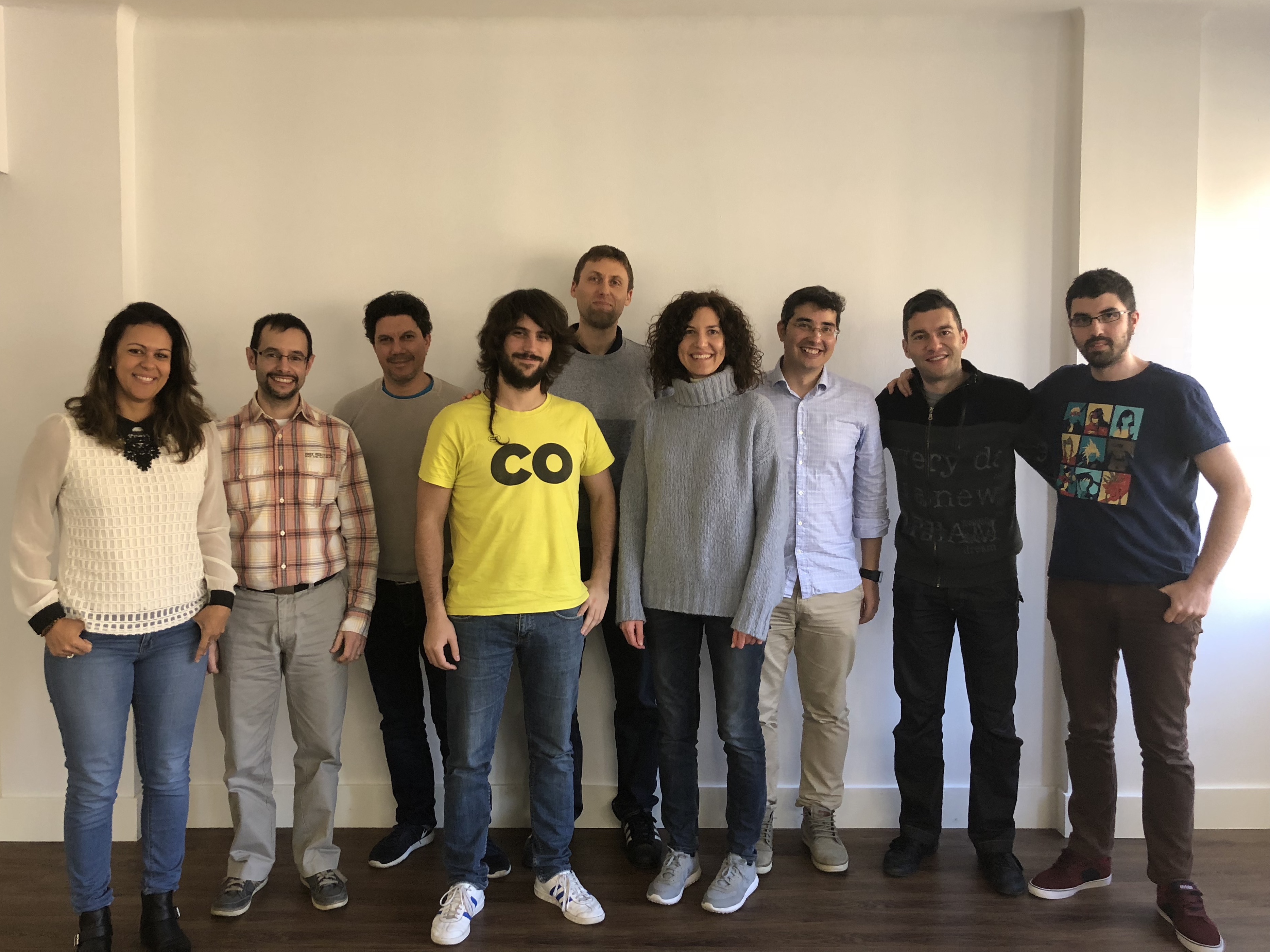CAREER OPEN HOUSE | 31st Jan, 7pm
We’re hiring Java and .NET Craftspeople in London & Barcelona. Come and meet us at our Career Open House on 31st January to learn more.
99% code coverage - Do we have a good safety net to change this legacy code?
- By Raquel M Carmena
- Posted 01 Sep 2017
- coverage testing mutation testing quality
A long time ago, I met a development team which was working under big pressure by the quality team. Personally, I don’t like this kind of differences between development and quality teams, because it leads to development teams not feeling responsible for quality and to a confrontational relationship. They should be working collaboratively towards a unified goal of delivering a quality product.
One of the requirements was to have more than 85% of code coverage to ensure code quality. The result was perverse: development team wrote tests without assertions; they only invoked methods with different arguments to reach the desired percentage. It’s clear that they didn’t follow TDD.
Code coverage only gives us information about the percentage of code lines which are executed during tests.
Let’s see a way to verify that our current tests provide us with a safety net when we make changes to production code.
If we change the production code - replacing < with >=, swapping + with - or we return a different value in a given method - test battery should detect that change. In order words, tests should fail.
There are tools to make changes in production code automatically and to run tests in order to check if those changes are detected. It is usually referred to as follow:
- Mutators: changes to be applied
- Mutations: new versions of production code after applying mutators
- Mutations are killed: tests fail; mutators are detected
- Mutations survive: tests don’t fail; mutators aren't detected
So, we should aim at killing every mutation with tests.
When I heard about it I thought about that game I played when I was just a teenager: Super Pang.

And I imagined a situation such as this:
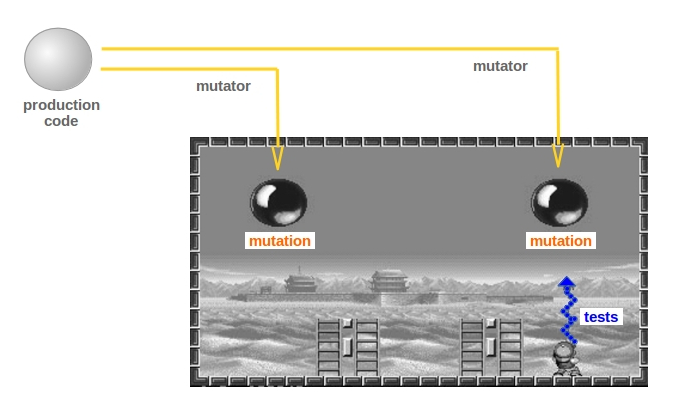
It’s called mutation testing and it's a good way to make sure that you have a good safety net with your current tests to refactor production code or to add new features. It is as if you test your tests in order to get more information about their suitability.
Let’s see some examples with PIT and a simple Java project with problematic code.
Example: boundaries
A boundary value could be forgotten when writing tests (even following TDD). For example, this piece of production code:
status arg3 = ((from.getParam1() < from.getParam2())? BLACK: WHITE);
If we don’t have a test which considers the same value for param1 and param2, a mutation will survive when applying Conditional Boundary Mutator:

PIT report shows the affected line:
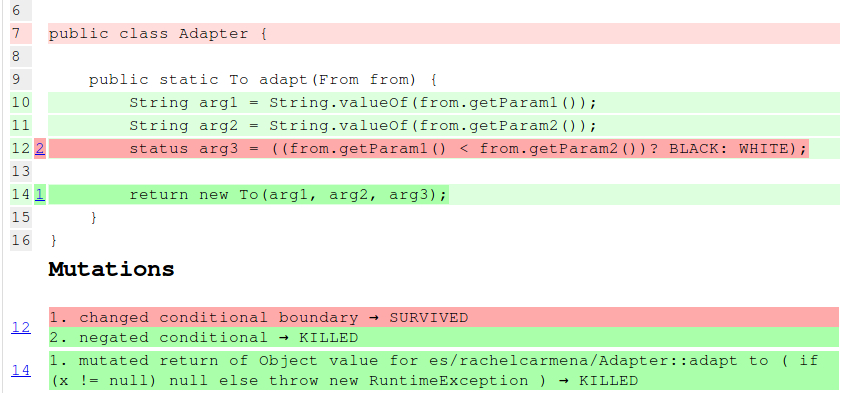
Example: equals and hashCode methods
I try to avoid having logic in production code which is only used from test code.
It’s common to find equals and hashCode methods in Java which are only used in verifications or assertions. It’s easy to generate the code of these methods automatically with an IDE such as IntelliJ IDEA, but at the same time, it’s easy to have outdated code if we don’t remember to regenerate them when changing the involved class (or we don’t receive an alert about this fact).
For example, a property is added to a class without updating equals and hashCode methods, so PIT statistics results in:

And PIT report alerts on equals and hashCode methods.
If these methods are only used from test code, we can replace them with EqualsBuilder.reflectionEquals from Apache Commons Lang:
assertTrue(reflectionEquals(actualObject, expectedObject));
In that case, we can succeed in killing every mutation:

Another option could be to use field by field comparisons from AssertJ. It's useful if the object under comparison has other custom objects as properties, so comparators for types can be added by usingComparatorForType.
Others prefer Lombok to make equals and hashCode methods available, but maybe it's not necessary if you only need to compare objects.
Regarding verification, refEq is available from Mockito.
Further reading
Take a look at Code quality cannot be measured by Sandro Mancuso.
Acknowledgments
My special thanks go to Halima Koundi, my very good colleague, for her help in this post.
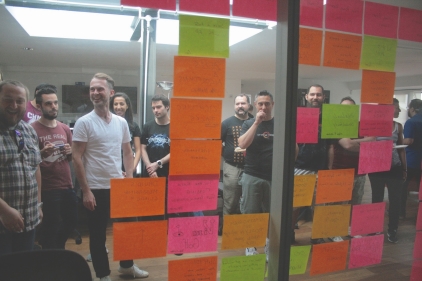
We're hiring!
Enjoying this article?
Related Blogs
Unit vs Integration Akka Testing
- Felipe Fernández
P3 Quality
- Raquel M Carmena
Database Testing With tSQLt
- Halima Koundi
Testing Spark Streaming: Integration testing with Docker Compose
- Felipe Fernández
Testing Spark Streaming: Unit testing
- Felipe Fernández
Testing multithreaded code in Java
- Felipe Fernández
Recent Blogs
Lambda Calculus in Clojure (Part 2)
- Sergio Rodrigo Royo
One Year of Codurance Barcelona
- Guillem Fernandez
Functions
- Christian Panadero Martinez
Applicative Functors and data validation, part II
- Carlos Morera de la Chica
Living a Coderetreat as a facilitator
- Raquel M Carmena
Tetris - Failed Experiment: Next Steps
- Dan Cohen

Software is our passion.
We are software craftspeople. We build well-crafted software for our clients, we help developers to get better at their craft through training, coaching and mentoring, and we help companies get better at delivering software.
Latest Blogs
One Year of Codurance Barcelona...
Functions
Useful Links
Contact Us
London EC1V 0JR
Phone: +44 207 4902967
Carrer Aragó, 208
08011, Barcelona
Phone: +34 689 723 737
Email: hello@codurance.com



